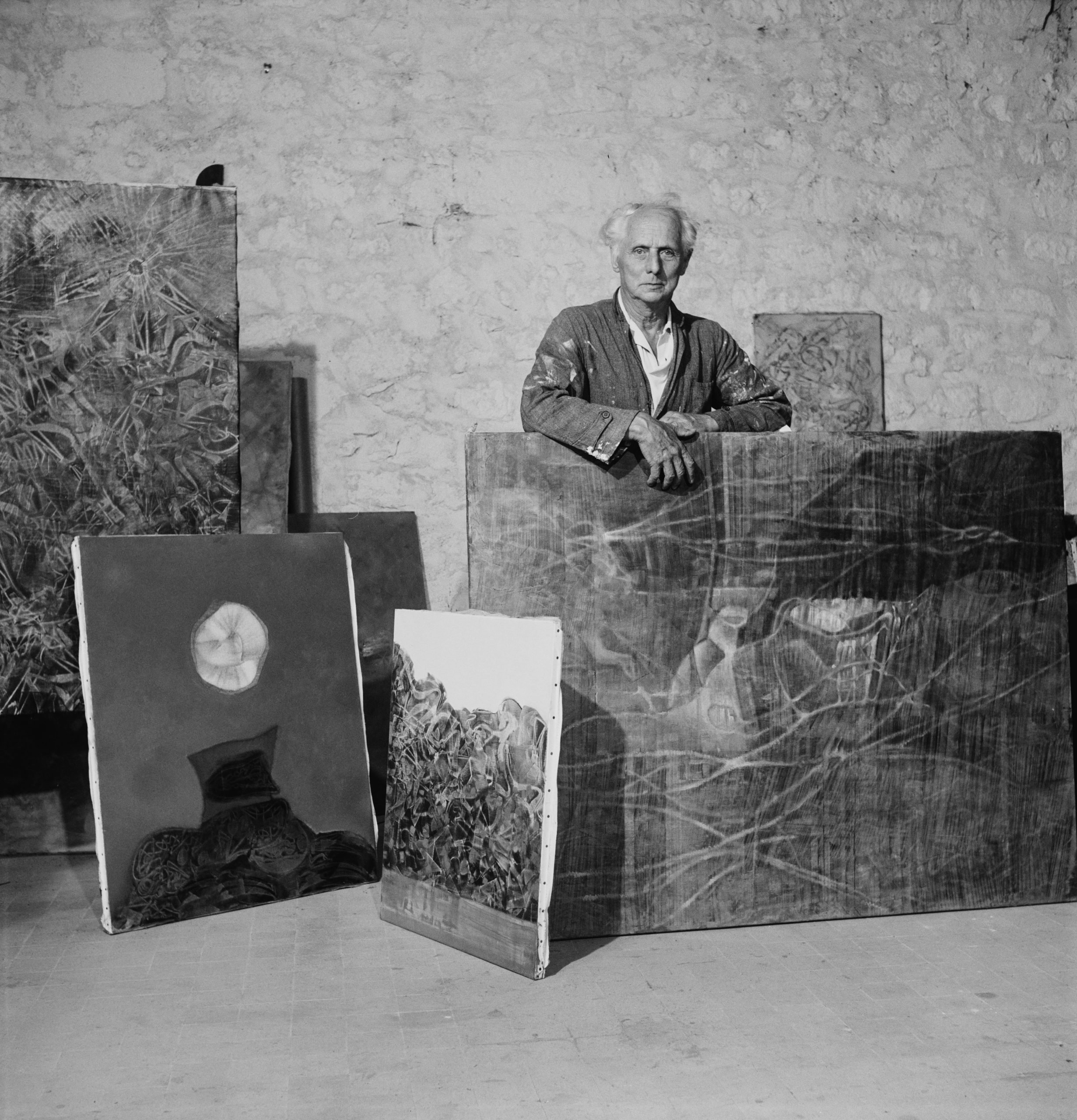
In the mid-1920s, German artist Max Ernst spent a lot of time staring at the floorboards of his Montmartre studio. The grains, deep and irregular from years of scrubbing, fixated him and so, one day, he laid pieces of paper over them and began rubbing. He worked in soft black pencil, twisting and turning the pages as he went. Beguiling forms and figures emerged, ones Ernst accentuated through additions and subtractions.
The technique is called frottage—from the French verb frotter, meaning “to rub”—and from 1925 to 1926 it was Ernst’s focus as he created new worlds using materials like leaves and their veins, bark, ragged edges of linen, netting, and most anything at hand with an intriguing texture. It culminated in his publication of Natural History, a collection of 34 rubbings.
Frottage relied upon chance, spontaneity, and individual perception, making it an ideal vehicle to explore the Surrealist concerns of automation and the unconscious. Accordingly, Jean Arp, Salvador Dalí, and Joan Miró all dabbled in the technique, using it as a tool to push against rationalism and the conventions of beauty in the wake of World War I.
Ernst had experienced the horrors of war more acutely than most of his artistic peers. Drafted as an artillery engineer, he was twice wounded and would later write in his autobiography, “Max Ernst died the 1st of August, 1914.” Fitting, then, that Ernst would develop a means of undermining the supposed truth teller of Western civilization: painting.
Max Ernst’s La horde (1927) on view at the Kunsthalle Wuerth Germany, 2010. Photo: Sascha Schuermann / DDP / AFP via Getty Images.
To do so, he adopted the logic of frottage to the canvas in a technique called grattage—from the French verb gratter, meaning “to scrape.” First, he placed textured materials such as wood, string, glass, and wire mesh underneath a canvas and applied a coat of paint. After this dried, Ernst would apply a second coat and begin scraping with tools like a palette knife or a comb. Next, he would observe the abstract images that appeared before him and allow for the wandering of his unconscious mind, blocking or highlighting aspects of the image to conjure new forms.
Though Ernst was first prompted to employ frottage by the floorboards of his studio, he would later cite two further influences: Leonardo da Vinci’s Treatise on Painting, which called for artists to devise scenes by looking at clouds or at a wall spotted with stains, and the memory of staring at the wooden panel of his childhood bed. This preoccupation with his early years would surface in many of his grattage works.
Ernst grew up in the heavily forested region of the Rhineland, and the great walls of seemingly impassable trees in many of his canvases call up the thrill and terror of excursions with his father. The feeling, he later wrote, was like “being hemmed in on all sides by hostile trees.” Another motif drawn from childhood was the looming bird, an alter-ego he called Loplop. His pet parrot had died the same night as his sister’s birth and ever since, birds and humans had become “encrusted in my mind.”
Grattage allowed Ernst to harness what he called the inner eye. “Seeing usually means you open your eyes to the outside world,” he said. “But it’s possible to see another way; you close your eyes and look into your inner world. If you can make a synthesis of these two worlds, the result is the synthesis of objective and subjective life.”
Despite the fixity of some such symbols in Ernst’s work, by the late 1930s the artist would largely move on to pioneering new techniques to push against the traditions of painting, with frottage and grattage having served their purposes in liberating his creativity.
What inspired Mary Cassatt’s portraits of mothers? Why did Jackson Pollock paint on the floor? Eureka investigates the origins of artists’ most famous works and techniques, unpacking how great art ideas happen.